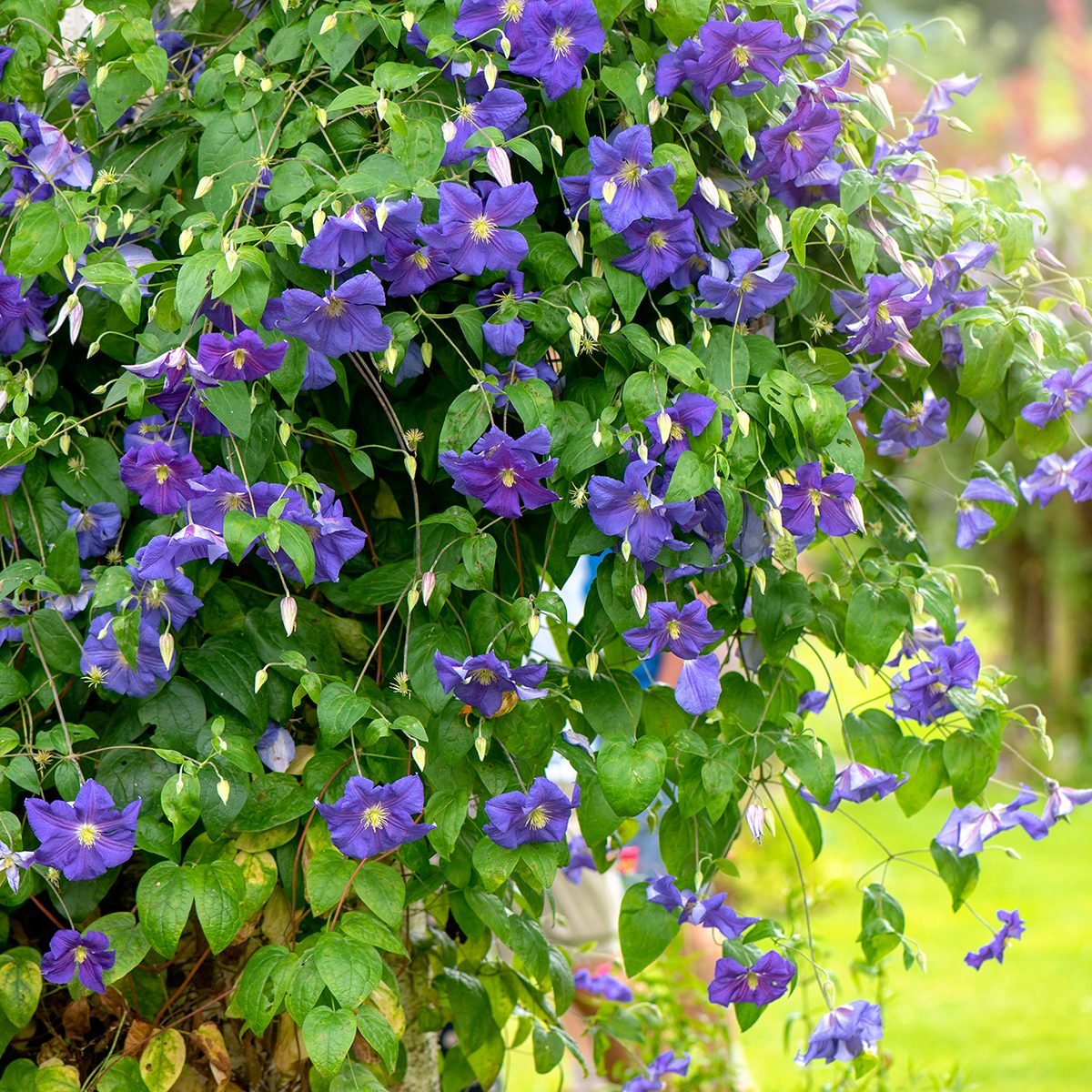
Grapes
Let’s start with an edible perennial vine! A grapevine is a great choice to grow at home. Enjoy grape jam, wine or snacks—the edible leaves can even be stuffed with meats and other fillings. Different varieties grow in many climates, with some hardy to Zone 4.

Clematis
Clematis are dazzling in the garden, climbing up trellises and showing off cascades of flowers. These plants can climb 10 to 20 feet high, and they like a sunny spot with their roots in shade. There are dozens of clematis varieties, but our favorites include Jackmanii with purple flowers and Henryi with white. Plus, they’re one of the top 10 vines for hummingbirds.

Climbing Nasturtium
You may know about annual or mounding types of nasturtiums, but there are several climbing varieties as well. In Zones 7 and warmer, these nasturtiums will grow as perennials reaching heights of four to six feet. You’ll get the jewel-toned, edible flowers that makes nasturtiums so beloved by gardeners.

Climbing Hydrangea
This high climber requires some patience, but will reward you with stunning, lush vines and fragrant flowers. Climbing hydrangeas can tolerate full shade, and they climb by attaching aerial roots to flat surfaces. It takes several years for the vine to get established, but the slow growth makes it easy to maintain.

Wisteria
Nothing evokes the romance of an English garden like the pale-purple clusters of wisteria flowers cascading down from its vines. When wisteria is established and has a sturdy support it’s a low-maintenance vine that can climb up to 30 feet. In some areas it’s considered invasive, so check with your local extension service before planting.

Hops
Grow hops for tall vines with unique cone-shaped flowers. Hops thrive in Zones 4-8. A vigorous grower, vines grow 15 feet high before flowering, and up to 30 feet after that—so be sure you have room in your landscape for them. You can use your hops to make home-brewed beer!

Boston Ivy
Give your home the Ivy League look—literally! Boston ivy is the beautiful vine with shiny, tightly clustered leaves seen scaling the sides of brick buildings. The green leaves turn a gorgeous red in the fall. Don’t confuse it with invasive English ivy, which can damage walls.

Hardy Kiwi Vine
This is a cold-tolerant relative of store-bought kiwi, perfect for growing in Zones 3-8. The vine is fast-growing with a spread of up to 30 feet. Grow this vine for the attractive heart-shaped leaves, or plant a male and female plant together to produce tiny, edible kiwi berries.

Trumpet Honeysuckle
If you love hummingbirds and butterflies, plant this vine. Trumpet honeysuckle is native to the U.S. and hardy in Zones 4-9. It grows vigorously to cover fences, trellises and walls. Best of all, for most of the summer it’s covered in fragrant orange-red flowers.

Maypop Passion Vine
This is another perennial vine butterflies and pollinators will adore. The maypop passion vine is a native plant that grows in Zones 6-11, strikingly covered in intricate purple blooms. This vine also produces edible fruits called maypops that taste similar to passion fruit.

Perennial Sweet Peas
Though this variety of sweet peas is not fragrant like the annual type, the trade-off is that they will return to you year after year. They grow up to 10 feet high on trellises and fences and are perennial in Zones 4-7. The pink and white blooms appear June through the fall. Create an affordable garden with these tips.

Dutchman’s Pipe
This perennial vine has one of the more unusual blooms, named for the resemblance to a curvy, old-fashioned pipe. The 10 to 15 feet high vines are usually grown for the thick cover of heart-shaped leaves—perfect to provide shade or privacy. This vine thrives in Zones 4-8.

Chocolate Vine
This one’s for the chocolate lovers out there! Yes, the dangling, purple-brown blooms have the scent of chocolate. It has large, heart-shaped leaves and can span 15 to 40 feet, so don’t be shy about pruning. It’s hardy to Zone 4. You can’t eat this plant, but here are some chocolate recipes you can dig into.
The post 13 Perennial Vines Your Garden Can’t Go Without appeared first on Taste of Home.
Nancy Mock